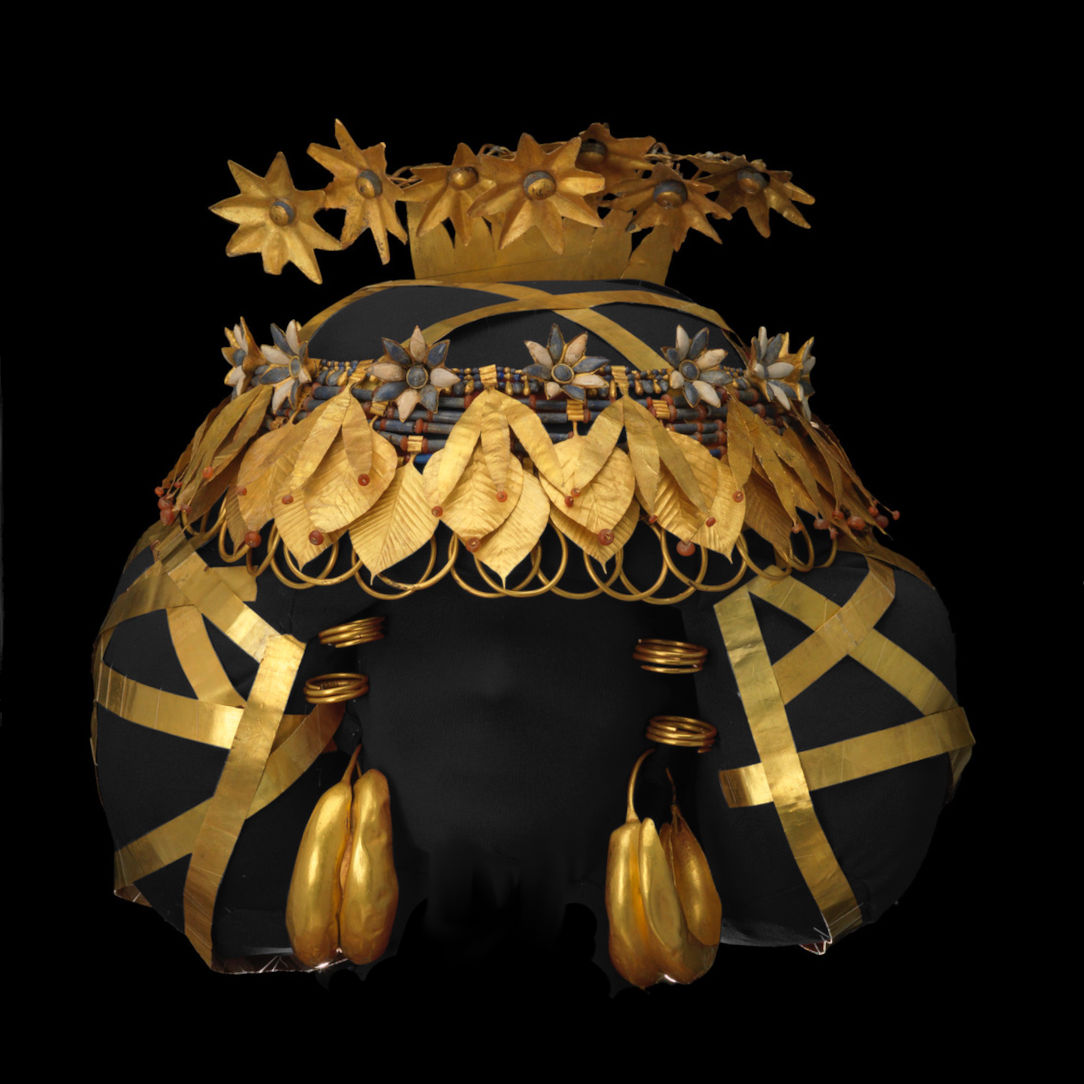
Queen Puabi Diadems. Gold, Lapis Lazuli. c. 2600-2450 BCE. Sumerian. Object Number: B17711A. Image: Pennsylvania State University Museum.
The Goddess & The Rose
By Nuri McBride
Sign up for our monthly newsletter!
Our modern understanding of the Mesopotamian goddess Inanna has been heavily influenced by her later Roman and Greek synchronisations of Venus and Aphrodite. While Venus and Aphrodite are interesting and complex characters in their own rights, many aspects of Inanna’s nature did not survive Hellenisation. All three characters, however, are deeply associated with roses.
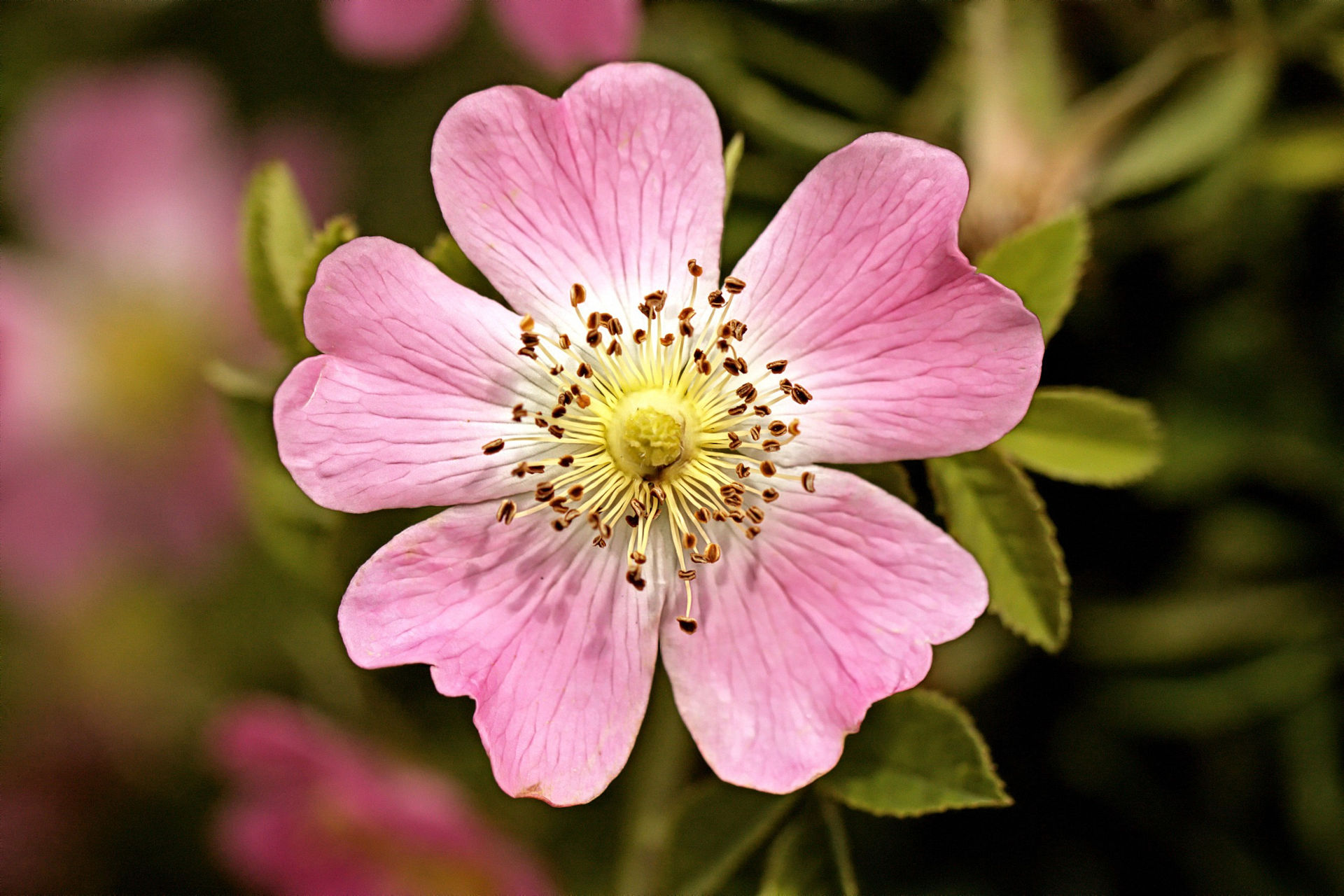
Roses, as the symbol of a love deity, seem like a hackneyed trope. However, understanding the actual plants that the ancient authors were referencing helps us unpack the original spiritual meanings embedded in these botanicals. Inanna’s roses were far from a Valentine’s Day bouquet. Let’s explore how a humble wild rose became linked with nuanced concepts of divine femininity in the ancient Near East.
Inanna of the Paradoxes
Inanna was the Mesopotamian goddess of love, fertility, sexuality, war, political power, and law. She began as a Sumerian sky deity, with the title, The Queen of Heaven, but was a relatively minor goddess in the pantheon. However, under the Akkadians, this early Inanna synchronised with an earlier iteration of Ishtar to become one of the most important deities of the Near East. She inspired or synchronised with dozens of other deities throughout ancient Southwest Asia. Inanna would be worshipped, in one form or another, from 4,000 BCE to the rise of Islam in 622 CE.
Inanna represented contradictory and even paradoxical characteristics. She is the reluctant girl forced to marry Dumuzi and the ambitious queen who descends to the Underworld to sit on her sister’s throne. In the Epic of Gilgamesh, she is a sympathetic figure weeping for the destruction of humanity but is also the vengeful would-be lover of the protagonist. She cannot prevent her rape by a mortal in the myth of Inanna and Sukaletuda. Yet, in her role as Divine Justice, she turns well water to blood, sends windstorms, and floods until she finds her attacker and destroys him. Inanna is a being of phenomenal power. Yet, her worship rose simultaneously with the historical increase in the oppression of women under the hierarchical and patriarchal structure of the Akkadian Empire. The tension between these two states shows in her myths.
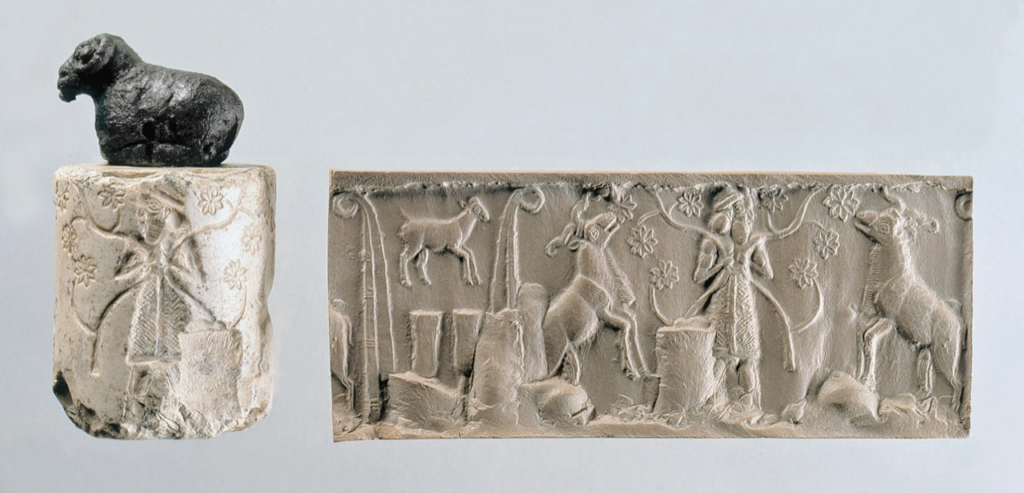
Inanna’s gender is also ambiguous and androgynous. In a hymn to Inanna, she states, “Though I am a woman, I am also a noble young man.”1 Inanna is both the hyper-feminine woman and the feminine man. Ritual cross-dressing was part of her cult worship, and transgender individuals were included in her priesthood.
She is often portrayed as hyper-feminine, but Inanna’s gender is not defined by mortal biology. Many of her later personifications would be gender non-conforming like the Hurrian god/goddess Shaushka or gender-flipped like the Western Semitic god Attar. Yet, both deities still possessed distinctly feminine traits. Aphrodite is portrayed as a cis-gender heterosexual woman, but vestiges of this gender fluidity linger in the myth of Hermaphroditus.
While Inanna is a wife and mother, she is never portrayed that way, or at least never as a good one, but she is also never shamed. The closest she gets to spousal piety is feeling bad that she condemns Dumuzi to the Underworld for having ambitions for her throne. Her sons are not fathered by her husband. Her children play no significant role in her myths. Inanna isn’t shown engaged in the duties expected of respectable women in the ancient Near East. Instead, Inanna is most often depicted as a joyous and bawdy sex worker, as she states, “When I sit by the door of the tavern, verily I am a prostitute who knows the penis”2. Also, she is a bloodthirsty warrior, “Inanna, you pile up heads like dust; you sow heads like seeds.”3
Venus and Aphrodite had their martial prowess entirely stripped from their characters and given to Mars and Ares. While Venus and Aphrodite were patrons of sex workers, they were rarely portrayed as ones themselves. Inanna was routinely portrayed in religious hymns as leaning out the window of a brothel with her breasts exposed, soliciting mortal men.
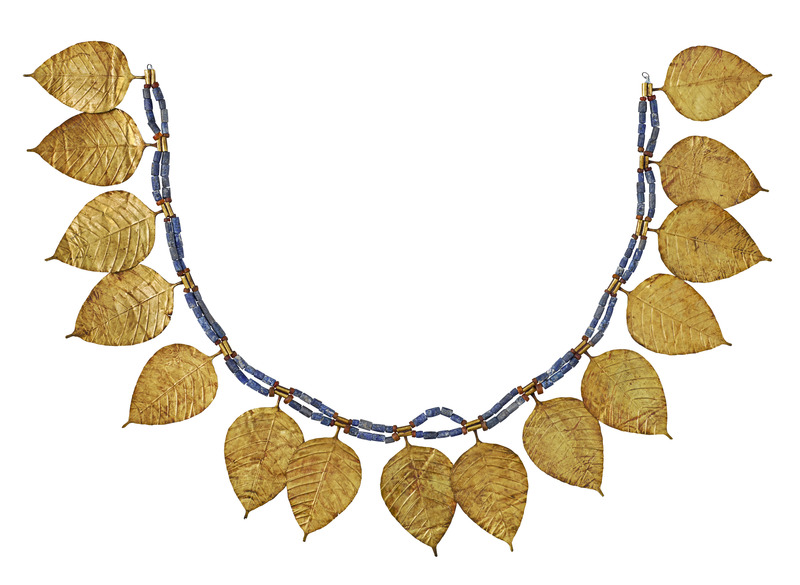
Inanna is a personification of a particular kind of paradoxical power. She can walk between love and violence, life and death, rule and lawlessness, masculine and feminine. Her transgressions against societal norms are not necessarily meant to be emulated. Ancient Mesopotamia was far from a sex-positive gender-neutral wonderland, but Inanna’s transgressions were necessary because they showed greater truths. They showed the limits of society and that those limits had the potential to change for better or worse. This is the power of liminality. In deeply patriarchal societies, women often must transverse liminal spaces of being to which their gender both exiles and liberates them. Inanna was the goddess of that liminality.
Inanna’s Icons
Inanna’s icons, the lion, dove, and rose, showed her liminal and paradoxical nature. The lion and the dove were already symbols of war and peace to the ancient Sumerians. The rose seems as gentle as the dove until you realise the rose in question is a 4,000 BCE rose. It was not a hybrid tea rose they were carving on her idols. It was a burly species rose4, with small daisy-like blooms, not lush 100-petal blossoms. These were not dainty roses bred from a hot house but heavily armoured wild thickets that came down to Mesopotamia from the Zagros mountains approximately 10,000 years ago.
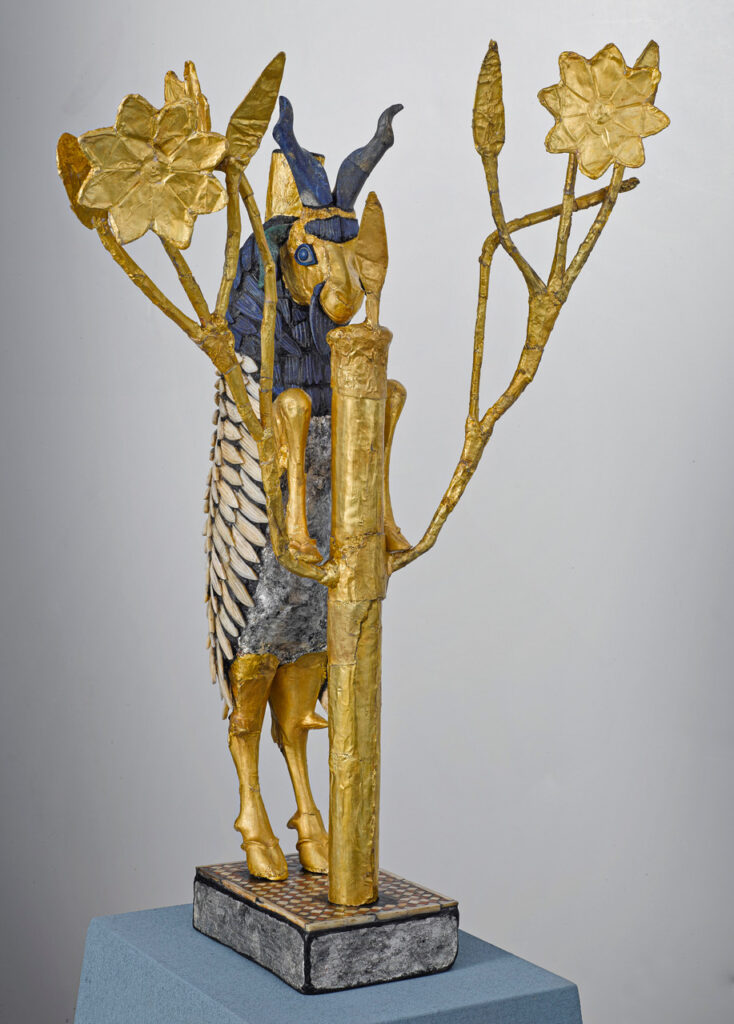
The icon of Inanna’s rose is also connected to the planet Venus. An eight-pointed star, a stylised astral Venus, is often depicted overhead in Inanna’s iconography. Many images show her rose and star together, looking almost identical. The blending of the image of the star and the rose is intentional. Items sacred to the goddess would be reflected on Earth and in Heaven as they were both her domains. It has been theorised that none of these images are roses but stylised stars. However, later archaeological finds, particularly of cylinder seals, show Inanna’s consecrated flock grazing on her sacred plant. That plant is distinctly a tall thicket studded with stylised rose blossoms.
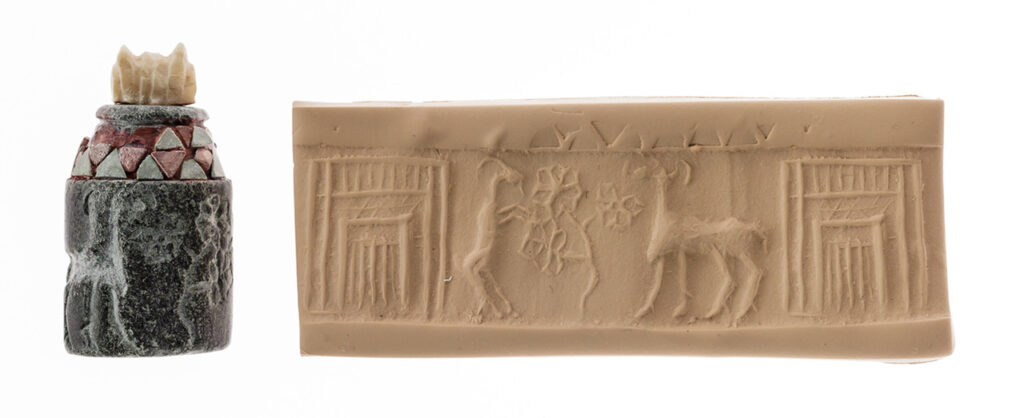
Inanna’s Amurdinnu
The Akkadian word for the rose depicted in this art is amurdinnu, which translates specifically to a wild rose bush with pronounced prickles. The plant that historians think is most likely to fit the written and visual descriptions of Inanna’s amurdinnu is Rosa canina var dumetorum. Dog Rose is a species rose with small, five to eight-petaled blossoms and curved canine-tooth-like prickles. Like other species roses, Dog Rose will grow into large dense thickets if left unattended.
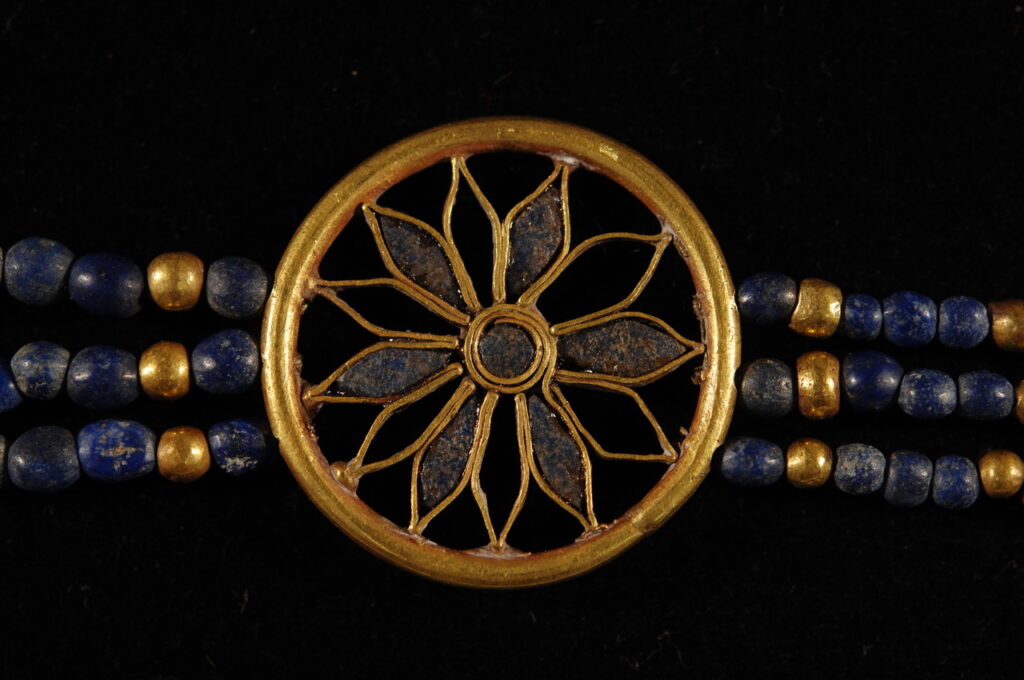
We may never know for certain if this is the exact variety the artists and authors were looking to for inspiration. Still, due to the time, location, and physical descriptions, it must be a wild rose that can easily form large dense thickets. Possible contenders include Dog Rose (Rosa canina), Beach Rose (Rosa rugosa), Eglantine (Rosa rubiginosa) or wild Musk Rose (Rosa moschata)5.
The Amurdinnu as Allegory
Inanna’s amurdinnu is as noteworthy for its fragrant flowers as its fanged prickles. Petal and prickle, this plant embodied Inanna’s paradoxical nature. The rugged thickets grew naturally in the liminal spaces between fields and copse of trees. People also planted amurdinnu as hedges, windbreaks, and boundary markers, physically occupying the borderlands between ordered life and wilderness. The amurdinnu has androgynous connotations in Mesopotamian literature as well. The rose hips, blossoms, and fragrance were feminine. The prickles, imposing thickets, and the wildlife that dwelled within them were masculine.
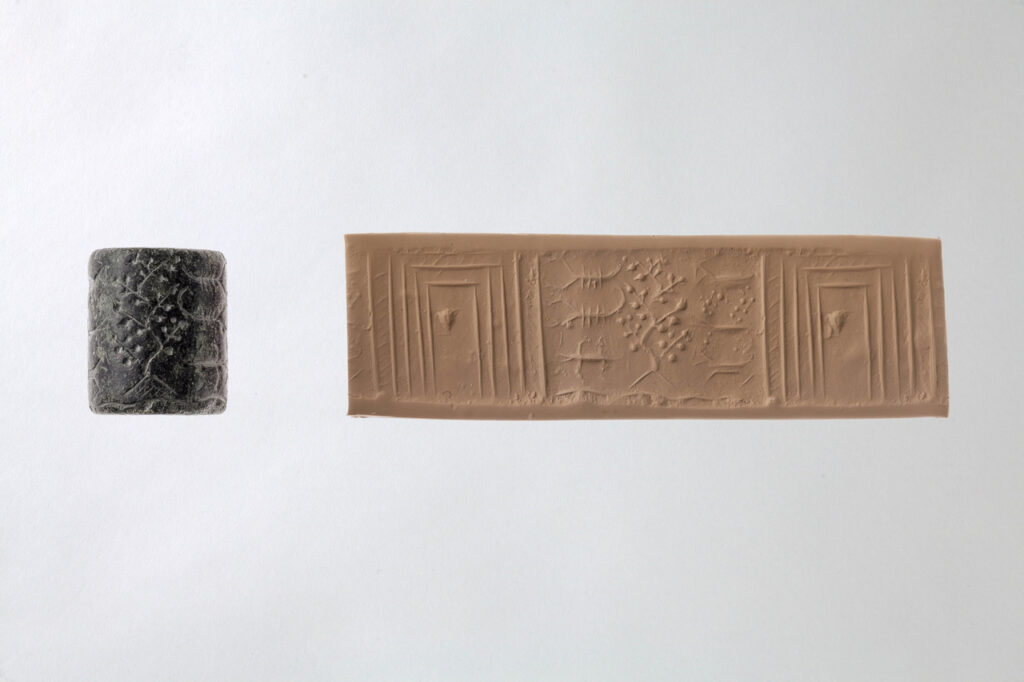
In the Epic of Gilgamesh, the Plant of Immortality is a magical flower said to have the painful fanged prickles of the amurdinnu, but if Gilgamesh is brave enough to risk the pain, it will restore his youth and strength. Inanna’s symbol is integrated into the anatomy of the Plant of Immortality. While the plant is fantastical, the author invokes a mythical version of this wild rose. After all, Inanna instigates the events that lead to Gilgamesh searching for the plant in the first place.
The species roses of Mesopotamia existed comfortably in liminal spaces between pleasure and pain, life and death, the city and the wild, and as such, served as the perfect botanical symbol for a goddess of periphery and paradox like Inanna.
Nuri McBride serves as the Program Curator for the Scent & Society lecture series at the Institute for Art and Olfaction. She is co-editor of the scent culture journal, Alabastron. McBride consults with private clients in the perfume and cosmetics sector as an organizational archivist and historian. She explores the intersection of olfaction and death rituals at the Death/Scent project and fragrance history in her monthly newsletter, Aromatica de Profundis.
1 The Assyrian Dictionary of the Oriental Institute of Chicago, vol. M/2, p.306
2 M.E. Cohen, “The Incantation Hymn: Incantation or Hymn” Journal of the American Oriental Society 95, no 4 (1975): 606: 14-22
3 C. Meyers, “The Military Structure Set Forth in Relation to the Woman” Studies in Literature from the Ancient Near East. Ed J.M Sasson, American Oriental Series no 65. New Haven Conn
4 Species roses are wild varieties of roses as found in nature without influence from human cultivation.
5 The wild varieties of Rosa moschata are believed to be extinct. Only hybridised cultivars exist today.
Plantings
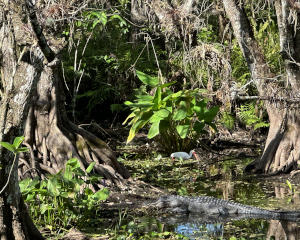
The Real Magic Kingdom: Florida’s Corkscrew Swamp
By Gayil Nalls
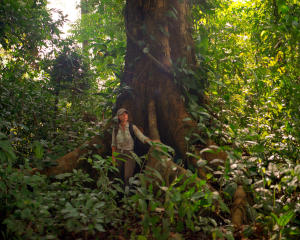
Mind the Darién Gap: Saving Central America’s Endangered Rainforest
By Alexandra Climent

Your Legacy on Earth May Be a Plant
By Veronique Greenwood
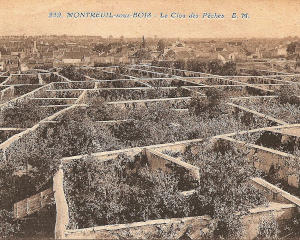
Fruit Walls: Urban Farming in the 1600’s
By Kris De Decker

Deirdre Fraser: The Plant Wizard of Pearl Morissette
By Gayil Nalls
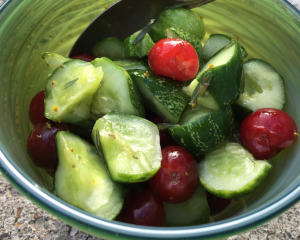
Eat More Plants Recipes:
Cucumber and Sour Cherry Salad
By Deirdre Fraser

As Ireland transitions from the rich, smoky scent of peat-burning to a more sustainable future, its olfactory heritage is evolving. What will become the next iconic aromatic symbol of Ireland?
Click to watch the documentary trailer.


